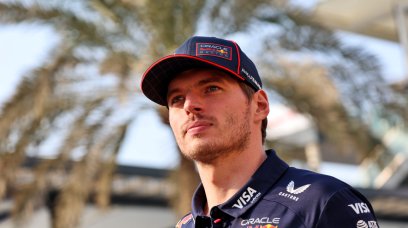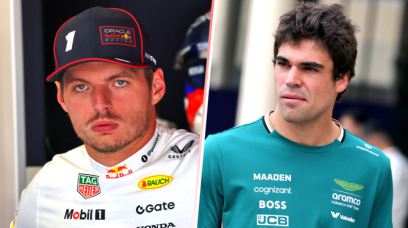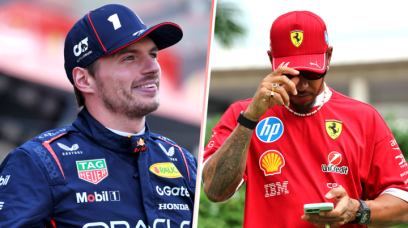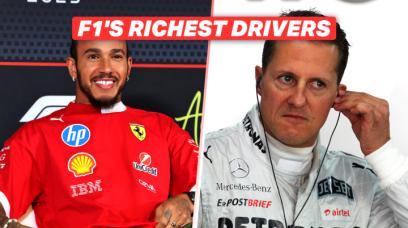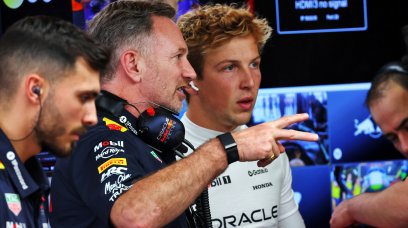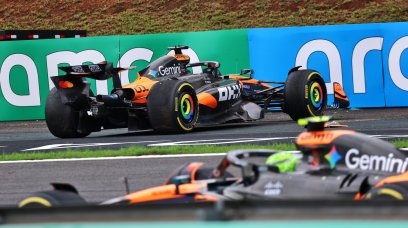First things first: it is not Red Bull's fault that they are so dominant in the 2023 Formula 1 season and all but have both championships wrapped up after five races of the season. The RB19 is a logical evolution of the all-conquering RB18 with typical season-on-season development propelling them forward. Moreover, the launch spec of the car and perhaps first round of upgrades were designed pre-cost cap penalty. That will only show its teeth later this year and into 2024. Put simply, Red Bull did their job. And nearest challengers Mercedes and Ferrari didn't. They failed to step up and provide meaningful competition to Max Verstappen and Sergio Perez, while allowing interloper Aston Martin to muscle in and start flexing. Behind Red Bull there is a gaggle of nine teams. It varies who is closest to the RB19, and with no set backmarker team, this is exactly what F1 craved when it came up with the 2021 (delayed until 2022) rules package: A few-tenths between all the cars allowing for thrilling, wheel-to-wheel racing. Except, that's not quite happening - and the lure of it has caused the problem facing Grand Prix racing in being labelled 'boring' in 2023.
2021 was both good and bad
With the exception of 2010 when there were three teams in the fight for the title (Red Bull, McLaren and Ferrari), think about the great seasons of F1 with intra-team rivalries. They had two teams fighting at the front with the rest a sizeable chunk behind. Take 2021 for example. That year, Mercedes and Red Bull were taking stripes off each other while the midfield battled themselves and it was arguably the greatest championship battle ever seen in F1 between Verstappen and Lewis Hamilton. It is because less is more. Two teams fighting among themselves is ideal for F1 as on one weekend Mercedes are faster and the next, it is Red Bull. The two can deploy strategy against one another and maybe even get their second drivers involved to support their team leaders. The more teams, the more strategies, the more variables you put into the mix, the greater the risk of the on track product becoming muddied and racing becoming "boring." On the flip-side, 2021 was also a bad year for F1, with the expectation being that every year would be as crazy, as chaotic, as " OMG" as that, especially as the audience boomed as the American enigma was finally cracked. This weight of expectation is currently being used as the albatross around the neck of Grand Prix racing - and until a season delivers as much as 2021 did, it will remain frustratingly in situ.
This is what F1 wanted
For a moment let your imagination go wild and remove Red Bull from the equation - forget they even exist. Instead of the three-way battle for second place, we would be enjoying a titanic tussle for the championship - with Fernando Alonso enjoying three wins and two seconds from the opening five Grands Prix with Hamilton and Charles Leclerc on a win apiece. Nirvana sure, but just because Red Bull are missing, the same fundamental problem of a lack of overtaking would remain - and because it would be for the championship, it would be even more exacerbated. It is something Alonso touched upon in Miami. "It has always been like this [in F1]," he told media, including RacingNews365. "For seven years, [Lewis] Hamilton and [Valtteri] Bottas were first and second and in the past, [Sebastian] Vettel and [Mark] Webber. "So you have the fastest car, you can start a little bit behind and you may still be making moves and overtakes, and if you are in any other car, wherever you're qualifying, you're more or less secure in that position. "There are not many overtakes after Lap 2 or Lap 3, but [not seeing] many overtakes is the nature of Formula 1, so it should not be a surprise." "If you removed the Red Bulls, sometimes within six-tenths, you are P3 to P16 in Q1 to get into the next session, so eventually you finish qualifying in the order that you deserved and then in the race, how will you overtake a car that is just half-a-tenth quicker? "Morally, it is the natural order, so I think that is the main reason." The two-time champion's point is a salient one. As the field spread and delta between the cars fighting behind Red Bull is so close, you are not going to overtake any. To do so often requires a lap time advantage of half a second or more. Currently, only Red Bull have such a luxury - hence why they are able to cut through the field at will - aided by their clever use of the DRS.
Be careful what you wish for
As convergence of the field continues to close up, the problem will only get worse, aided by those shorter DRS zones. This increases the likelihood of DRS trains and races simply turning into 'Follow the Leader' for 90 or so minutes on a Sunday, and if you haven't got that massive performance delta over the car in front, you are relying on a mistake from the driver ahead to claim position, and mistakes are rare. There is no obvious quick fix either. Teams won't suddenly become worse, they will only continue to get better, add more performance and as the rules cycle mature, the gains become ever smaller and the chance for a big leap forward evaporates. While the rules are still relatively immature, there is scope for a Mercedes or Ferrari to make gains and latch onto the rear wing of Red Bull. Aston are continuing to grow but they are possibly not quite there just yet, putting the onus on the two fallen giants to sort themselves out and make a fight of things. If, and when, that happens, just observe the difference in attitude toward Grand Prix racing - it will suddenly be thrilling once again and everything will be okay. But until some serious competition turn up, this is Red Bull's world, and we're just living in it.
Most read
